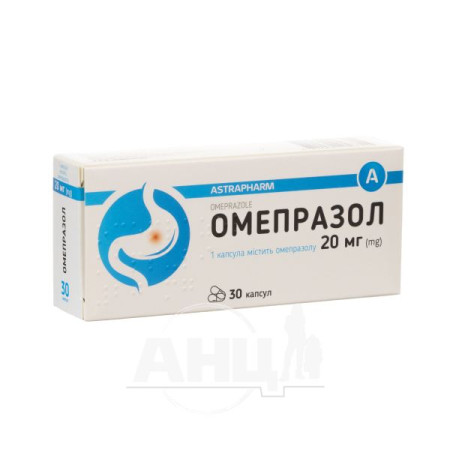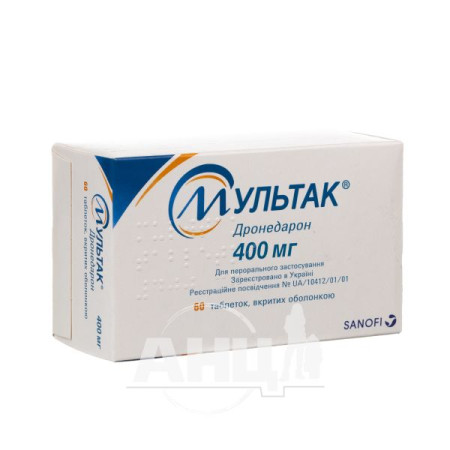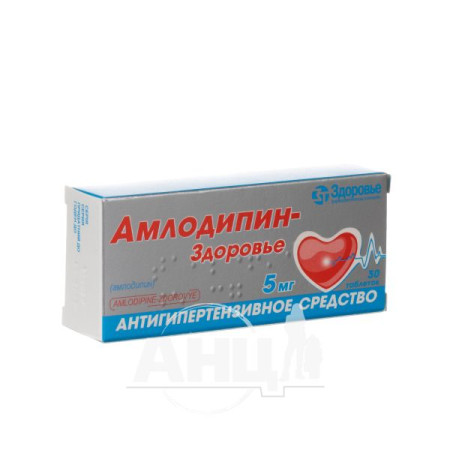Egilok tablets 100 mg bottle No. 30

Pharmacological properties
Pharmacodynamics. Metoprolol is a cardioselective β1-adrenoceptor blocker. It does not have a membrane-stabilizing effect and does not have intrinsic sympathomimetic activity.
It suppresses the effects of increased sympathetic activity in the heart, significantly reducing heart rate, contractile activity of the heart, cardiac output, and blood pressure.
In hypertension, metoprolol reduces blood pressure in patients both in the standing and supine positions. The long-term antihypertensive effect of the drug is associated with a gradual decrease in OPSS.
In patients with hypertension, long-term use of the drug leads to a statistically significant decrease in left ventricular mass and improvement in left ventricular diastolic function.
In men with mild to moderate hypertension, metoprolol reduces mortality from cardiovascular disease (primarily the incidence of sudden death, fatal myocardial infarction, and stroke).
By reducing systemic blood pressure, heart rate, and cardiac contractility, metoprolol reduces myocardial oxygen demand. By reducing heart rate and thus prolonging diastole, metoprolol improves perfusion and oxygenation of myocardial areas with impaired blood supply.
In addition, the drug reduces the number, duration, and severity of angina attacks, as well as asymptomatic ischemia, and increases exercise tolerance.
In myocardial infarction, metoprolol reduces mortality by reducing the risk of sudden death. This effect is primarily associated with the prevention of ventricular fibrillation. The reduction in mortality is observed regardless of whether metoprolol was used in the early or late stage of the disease, as well as in cases of increased risk and in patients with diabetes mellitus.
When using metoprolol after a myocardial infarction, the risk of a second heart attack is reduced.
In congestive heart failure due to dilated cardiomyopathy, metoprolol, initially prescribed at a low dose (5 mg twice daily) and then gradually increased, improved heart function, quality of life, and physical activity in patients; reduced the number of rehospitalizations for heart failure and the need for heart transplantation.
In supraventricular tachycardia, atrial fibrillation and ventricular extrasystole, metoprolol reduces the ventricular rate and the number of extraventricular contractions.
In therapeutic doses, the peripheral vasoconstrictor and bronchoconstrictor effects of metoprolol are less pronounced than those of nonselective β-adrenergic blockers.
Compared with non-selective β-blockers, metoprolol has much less effect on insulin synthesis and carbohydrate metabolism. It only slightly alters the cardiovascular response to hypoglycemia or increases the duration of hypoglycemia.
In short-term clinical studies, metoprolol induced a slight increase in triglyceride levels and a slight decrease in plasma free fatty acids. In some cases, a slight decrease in HDL-C was also observed, but this was less than with non-selective β-adrenergic blockers. However, a long-term clinical study demonstrated a significant decrease in total plasma cholesterol after several years of treatment with metoprolol.
Pharmacokinetics
Metoprolol is rapidly and almost completely absorbed from the gastrointestinal tract. The pharmacokinetic parameters of metoprolol are linear in the therapeutic dose range.
C max in blood plasma is reached 1.5-2 hours after administration. After absorption, metoprolol is metabolized during the first passage through the liver. The bioavailability of metoprolol is almost 50% after a single dose and almost 70% after repeated administration.
Concomitant food intake may increase the bioavailability of metoprolol by 30-40%.
Binding to blood plasma proteins is low - about 5-10%.
Metoprolol is widely distributed in tissues and has a high volume of distribution (5.6 l/kg body weight).
Metoprolol is metabolized in the liver by cytochrome P450 enzymes. The metabolites are inactive.
T ½ - 3.5 h on average (it varies within 1-9 h).
Total clearance is approximately 1 l/min.
More than 95% of the dose taken is excreted in the urine, 5% is excreted unchanged. In some cases, the latter value may increase to 30%.
In elderly patients, the pharmacokinetic parameters of metoprolol do not change significantly.
Renal insufficiency does not affect the systemic bioavailability and elimination of metoprolol. However, in such cases, the excretion of metabolites is reduced. Significant accumulation of metabolites was observed in patients with renal insufficiency (glomerular filtration rate - 5 ml / min). However, the accumulation of metabolites does not increase the degree of β-blockade.
Hepatic insufficiency has little effect on the pharmacokinetic parameters of metoprolol. However, in severe cirrhosis of the liver and after portocaval anastomosis surgery, the bioavailability of metoprolol may increase and the total clearance may decrease. In patients after portocaval anastomosis surgery, the total clearance decreased to approximately 0.3 l/min and the AUC increased approximately 6-fold compared to healthy subjects.
Antihypertensives, as monotherapy or in combination with other antihypertensive agents; to reduce mortality from cardiovascular disease or coronary artery disease in patients with antihypertensives.
Angina pectoris. The drug can be used as monotherapy or in combination with other antianginal agents.
To reduce mortality and the frequency of recurrent myocardial infarction (as secondary prevention).
Heart rhythm disturbances (sinus tachycardia, supraventricular tachycardia, ventricular extrasystole).
Functional disorders of cardiac activity accompanied by tachycardia.
Migraine prevention.
Application
Egilok. Tablets are taken regardless of meals. If necessary, the tablets can be divided.
The dose should be set individually, increasing it gradually to avoid excessive bradycardia.
Hypertension: in mild and moderate hypertension, the initial dose is 25 mg or 50 mg 2 times a day (morning and evening). If necessary, the daily dose can be gradually increased to 100 mg 2 times a day or other antihypertensive agents can be used in combination with Egilok.
Angina pectoris: initial dose of the drug is 25 mg or 50 mg 2-3 times a day, which, if necessary, can be gradually increased to 200 mg/day or the drug can be combined with other antianginal agents.
Maintenance therapy after myocardial infarction: the usual dose is 50-100 mg 2 times a day (morning and evening).
Arrhythmia: initial dose - 25-50 mg 2 or 3 times a day. If necessary, the daily dose can be gradually increased to 200 mg or other antiarrhythmic drugs can be used in combination with Egilok.
Functional cardiac disorders accompanied by tachycardia: the usual daily dose is 50 mg 2 times a day (morning and evening), which, if necessary, may be increased to 100 mg 2 times a day.
Migraine prevention: the usual daily dose is 50 mg 2 times a day (morning and evening), which may be increased to 100 mg 2 times a day if necessary.
Special patient groups
Patients with renal insufficiency do not require dose adjustment.
There is no need to change the dose in patients with cirrhosis of the liver, since the binding of metoprolol to plasma proteins is low (5-10%). In severe hepatic insufficiency (e.g. after bypass surgery), a reduction in the dose of metoprolol may be necessary.
Elderly patients do not need to reduce the dose.
Egilok Retard. For all indications, the drug should be taken once a day.
The daily dose is recommended to be taken in the morning with a small amount of water, without chewing the tablet. The tablets can be taken regardless of meals or during meals.
If necessary, the film-coated tablet can be broken in half.
To avoid bradycardia, the dose must be selected individually.
Hypertension: the average daily dose is 50 mg in 1 dose. If necessary, the dose can be increased to 100-200 mg in 1 dose. To enhance the hypotensive effect, Egilok Retard can be used with other antihypertensive agents.
Angina pectoris: the dose of the drug is 50 mg/day in 1 dose. If necessary, the dose can be increased to 100-200 mg in 1 dose. To enhance the clinical effect, Egilok Retard can be used with other antianginal drugs.
After myocardial infarction, the maintenance dose is 200 mg once a day.
Stable chronic heart failure: the recommended initial dose of the drug during the first 2 weeks is 25 mg/day. After 2 weeks, the dose can be increased to 50 mg 1 time per day and then every 2 weeks it can be doubled to 100 mg, then to 200 mg. It is recommended to gradually increase the dose when taking metoprolol preparations of immediate mechanism of action until a daily dose of 25 mg is reached. In severe cases of heart failure, it is recommended to use low doses or tablets of metoprolol of non-prolonged action.
For arrhythmia, the initial dose of the drug is 50-200 mg once a day.
For functional heart disorders, the usual dose of the drug is 50-200 mg once a day.
For the prevention of migraine attacks - 100-200 mg/day in 1 dose.
Contraindication
Hypersensitivity to metoprolol or any other component of the drug or to other β-adrenoceptor blockers, AV block II and III degree, severe sinus bradycardia, sick sinus syndrome, cardiogenic shock, severe peripheral circulatory disorders, decompensated heart failure, acute myocardial infarction, if HR 45 / min, pq interval - 240 ms, systolic blood pressure - 100 mm Hg. patients who require long-term and continuous treatment with inotropic β-agonists.
Side effects
From the side of the central nervous system: very often - increased fatigue; often - dizziness, headache; infrequently - paresthesia, muscle spasms, depression, impaired attention, drowsiness, insomnia, nightmares; rarely - nervousness, tension, sexual disorders; very rarely - amnesia, memory impairment, confusion, hallucinations.
From the gastrointestinal tract: often - nausea, abdominal pain, diarrhea, constipation; infrequently - vomiting; rarely - dry mouth, changes in liver function tests; very rarely - hepatitis.
On the part of the skin: infrequently - rash (urticaria, psoriatic and dystrophic skin lesions), increased sweating; rarely - alopecia; very rarely - photosensitization, progression of psoriasis.
On the part of the respiratory system: often - shortness of breath during physical exertion; infrequently - bronchospasm (even in the absence of obstructive lung disease); rarely - rhinitis.
Sensory system: rarely - visual impairment, xerophthalmia and/or eye irritation, conjunctivitis; very rarely - tinnitus, taste disturbance.
Metabolic disorders: infrequently - weight gain.
From the blood system: very rarely - thrombocytopenia.
From the musculoskeletal system: very rarely - arthralgia.
Special instructions
Anaphylactic shock may be severe in patients taking metoprolol.
Metoprolol may exacerbate existing bradycardia.
Metoprolol may exacerbate symptoms of peripheral circulatory disorders.
It is necessary to avoid abrupt discontinuation of the drug. Egilok is canceled gradually by gradually reducing the dose over 7-10 days.
Abrupt withdrawal of the drug may worsen angina symptoms and lead to myocardial infarction. Patients with coronary artery disease require special attention during the withdrawal period.
Heart failure should be compensated before starting metoprolol, and the state of compensation should be maintained throughout the entire treatment period.
Despite the fact that cardioselective β-adrenergic blockers have less effect on respiratory function than nonselective β-blockers, it is recommended that they are not prescribed to patients with COPD if possible. If it is necessary to prescribe metoprolol to patients with bronchial asthma, simultaneous administration of β 2 -agonists (tablets or spray) or a change in the dose of previously used β 2 -agonists may be required.
When prescribing the drug to patients with diabetes, it is necessary to constantly monitor carbohydrate metabolism and, if necessary, adjust the dose of insulin and oral antidiabetic drugs.
In patients with pheochromocytoma, metoprolol should be combined with α-adrenergic blockers.
The bioavailability of metoprolol may be increased in liver cirrhosis.
In patients receiving β-adrenergic blockers, adrenaline may increase blood pressure and cause (reflex) bradycardia; this reaction is less likely with selective β-adrenergic blockers.
Before any surgical operation, the anesthesiologist should be warned that the patient is taking metoprolol.
Since Egilok must be discontinued before surgery, discontinuation should be carried out no later than 48 hours before surgery, except in special cases, such as thyrotoxicosis or pheochromocytoma.
In some cases, the administration of β-adrenergic blockers before surgery may be beneficial because they can reduce the arrhythmogenic effects and coronary blood flow during surgical stress, which causes a predominance of sympathetic tone. If a β-adrenergic blocker is used, an anesthetic with a weak negative inotropic effect should be chosen to reduce the risk of myocardial depression.
Very rarely, pre-existing moderate atrioventricular conduction disturbances may worsen, sometimes with the development of atrioventricular block.
This drug should not be prescribed to patients with hereditary fructose intolerance, glucose-galactose malabsorption, or sucrase/isomaltase insufficiency.
Use during pregnancy and breastfeeding. Due to the lack of data from controlled clinical studies during pregnancy and breastfeeding, Egilok can be used only in cases where the benefit of using the drug for the mother justifies the possible risk to the fetus / child.
If possible, metoprolol should be discontinued 48-72 hours before the expected time of delivery. If administration is unavoidable, infants should be closely monitored for several days (48-72 hours) after birth, as the drug may enter the fetal bloodstream and cause bradycardia, respiratory depression, hypotension, and hypoglycemia.
Despite the ability of metoprolol to penetrate the placental barrier, no signs of its fetotoxicity have been detected. Despite the fact that when metoprolol is administered in therapeutic doses, only a small amount of the drug penetrates into breast milk and does not have a significant β-blocking effect on infants, they should be constantly monitored (bradycardia is possible).
Children: There is no experience with the use of the drug in children.
The ability to influence the reaction rate when driving vehicles or working with other mechanisms. Since dizziness and weakness may occur when taking the drug Egilok, it is necessary to refrain from driving vehicles and working with complex mechanisms during the period of treatment.
The antihypertensive effect of Egilok and other antihypertensive drugs is usually additive. In order to avoid hypotension, constant monitoring of patients receiving combinations of such drugs is necessary. However, the summation of the effects of antihypertensive drugs can be used if necessary to achieve effective control of the blood pressure.
The drug cannot be combined with the following medications:
verapamil (intravenous administration) or other similar calcium channel blockers (risk of asystole); MAO inhibitors.Caution should be exercised when combining with the following agents:
oral antiarrhythmics, calcium channel blockers such as verapamil and diltiazem, parasympathomimetics (risk of hypotension, bradycardia and AV block); digitalis glycosides (risk of bradycardia, conduction disturbances; metoprolol does not affect the positive inotropic effect of digitalis drugs); nitrates and other antihypertensive drugs (especially the guanethidine, reserpine, methyldopa, clonidine and guanfacine groups) due to the risk of hypotension and/or bradycardia; some drugs acting on the central nervous system, such as: hypnotics, tranquilizers, tri- and tetracyclic antidepressants, neuroleptics and alcohol (risk of hypotension); narcotics (risk of cardiac depression); α- and β-sympathomimetics (risk of hypertension, severe bradycardia; possibility of cardiac arrest); when taken simultaneously with clonidine, treatment must be discontinued, necessarily first canceling metoprolol, and then (after a few days) - clonidine. If clonidine is canceled first, a hypertensive crisis is possible; ergotamine (enhancement of the vasoconstrictor effect);β 2 -sympathomimetics (functional antagonism);
NSAIDs (e.g. indomethacin) due to possible reduction of the antihypertensive effect; estrogens (possible reduction of the antihypertensive effect of metoprolol); oral antidiabetic drugs and insulin (metoprolol may enhance their hypoglycemic effect and mask the symptoms of hypoglycemia); curare-like muscle relaxants (enhancement of neuromuscular blockade); enzyme inhibitors (e.g. cimetidine) - possible enhancement of the effects of metoprolol due to increased plasma concentrations; enzyme inducers (rifampicin and barbiturates) - the effects of metoprolol may be reduced due to increased hepatic metabolism.The simultaneous use of sympathetic ganglion blocking agents and other β-blockers (e.g. eye drops) requires constant monitoring.
Simultaneous food intake does not significantly affect the pharmacokinetics of the drug.
Overdose
Symptoms: arterial hypotension, sinus bradycardia, AV block, heart failure, cardiogenic shock, asystole, nausea, vomiting, cyanosis, bronchospasm, hypoglycemia, loss of consciousness, coma, in some cases - hypoglycemia.
Treatment: gastric lavage, activated charcoal, in severe hypotension - β-adrenergic agonists (noradrenaline) or intravenous administration of atropine (for bradycardia). In the absence of effect, dopamine, dobutamine, norepinephrine (noradrenaline) should be prescribed. Glucagon (1-10 mg) may be effective. In severe cases, implantation of an artificial pacemaker may be necessary. Bronchospasm is eliminated by intravenous administration of β 2-adrenergic agonists (for example, terbutaline). Metoprolol is practically not removed from the body by hemodialysis.
Storage conditions
At a temperature of 30 °C.
There are no reviews for this product.
There are no reviews for this product, be the first to leave your review.
No questions about this product, be the first and ask your question.






